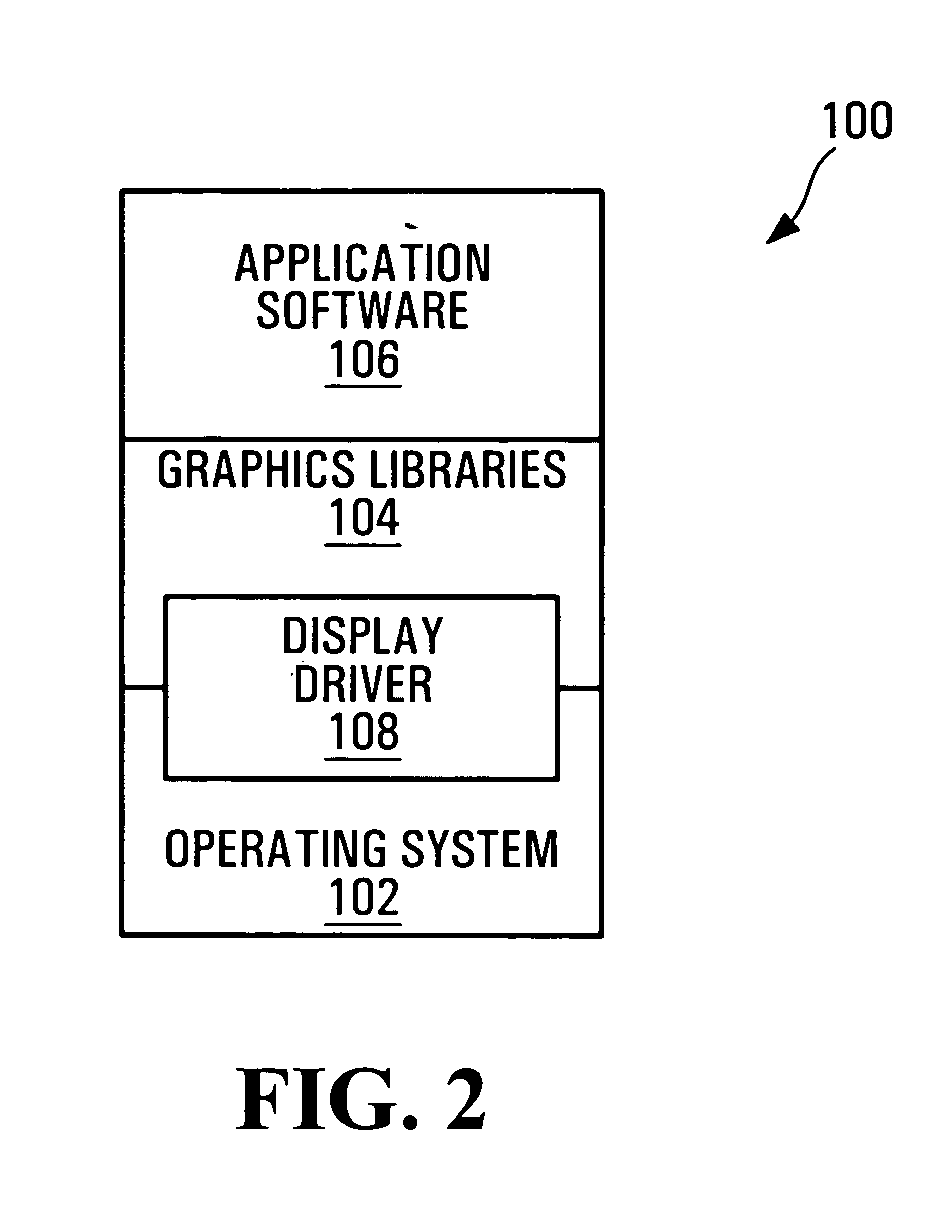Master/slave graphics adapter arrangement
a graphics adapter and slave technology, applied in the field of computer devices, can solve the problems of the formation of graphics processors, and the redundancy of integrated graphics components, and the inability to provide the features or performance of high performan
- Summary
- Abstract
- Description
- Claims
- Application Information
AI Technical Summary
Benefits of technology
Problems solved by technology
Method used
Image
Examples
first embodiment
[0048] In a first embodiment, graphics adapter driver software 108 within memory 16 performs steps S500 depicted in FIG. 5A. Specifically, driver software 108 generates commands directing graphics processor 54 to render the secondary adapter buffer 72 of memory 56, in steps S502. These commands are placed in the command queue 57 of adapter 52 and executed by graphics processor 54, in much the same way as commands would be queued in queue 47, as described above. Once the frame is rendered, driver software 108 further generates a command (or commands) causing processor 54 to bit block transfer (BITBLT) the contents of secondary adapter frame buffer 72 within memory 56 in step S504, to that area of memory 16 allocated as frame buffer 46 for graphics adapter 34.
[0049] Display interface 44 of graphics adapter 34, in turn, has been pre-programmed to display the contents of its frame buffer 46 to an interconnected monitor or display at port 48. Conveniently then, images displayed on displa...
second embodiment
[0051] In a second embodiment, steps S600 depicted in FIG. 6A are performed. Initially, front and back frame buffers are allocated within memory 16 of adapter 52. For convenience these are designated as buffers 46a and 46b, and depicted in FIG. 6B. Processor 54 again renders any frame to presented by display interface 44 within secondary adapter frame buffer 72 of memory 56 as described above with reference to step S502, in step S602.
[0052] At the conclusion of rendering a frame for display on device 32, driver software 108 programs graphics processor 54 to bit block transfer (BITBLT) the contents of secondary adapter frame buffer 72 within memory 56, to the then current back buffer within memory 16 for graphics adapter 34 in step S604. Upon completion of the BITBLT, driver programs processor 54 to program registers of display interface 44 to flip the back buffer and front buffer of adapter 34 (i.e. use the back buffer as the front buffer), in step S606. This may be done by directly...
third embodiment
[0054] Thus, in yet a third embodiment, steps S700 depicted in FIG. 7 may be performed. Again, front and rear buffers 46a, 46b are initially allocated within memory 16 used by adapter 34. Processor 54 again renders images for display at device 32 within buffers 72 of local memory 56, as described above with reference to steps S502 and S602.
[0055] At the completion of rendering a frame for display on display 32, driver software 108 within memory 16 programs graphics processor 54 to bit block transfer (BITBLT) the contents of secondary adapter frame buffer 72 within memory 56, to the then current back buffer within memory 16 of graphics adapter 34 in step S704. Driver software 108 further places a command in the command queue 47 of adapter 34 to flip front and back buffers, in step S706. However, registers of command processor 42 are not updated by driver software 108 to reflect the pending command in command queue 47. Instead, driver software 108 provides a command to graphics proces...
PUM
 Login to View More
Login to View More Abstract
Description
Claims
Application Information
 Login to View More
Login to View More - R&D
- Intellectual Property
- Life Sciences
- Materials
- Tech Scout
- Unparalleled Data Quality
- Higher Quality Content
- 60% Fewer Hallucinations
Browse by: Latest US Patents, China's latest patents, Technical Efficacy Thesaurus, Application Domain, Technology Topic, Popular Technical Reports.
© 2025 PatSnap. All rights reserved.Legal|Privacy policy|Modern Slavery Act Transparency Statement|Sitemap|About US| Contact US: help@patsnap.com



